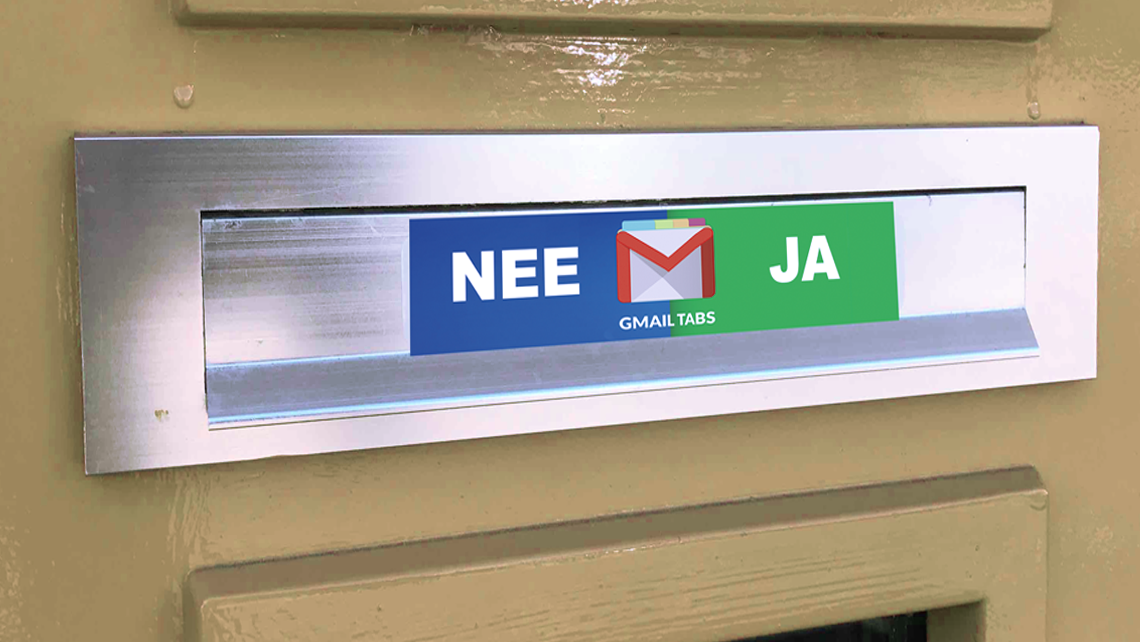How to get your email noticed
Even with a valid opt-in for your marketing emails, you are running the risk your carefully crafted messages will end up where your subscribers won’t see them.
What is the problem?
About 6 years ago, Gmail introduced Tabs. This is now the standard setting for the Gmail app (users can change this, but not everyone may be aware of that …). Google indexes the emails and puts them in different inboxes for these 5 categories: Primary, Social, Updates, Forums and Promotions. The last of these is the one that concerns us, of course, because:
- Around 40% of the average email list consists of Gmail adresses
- Almost 20% of people that use Tabs never look at their ‘Promotions’ inbox
- Part of your email send is never opened, not because your subscriber isn’t interested, but because your email ended up in the ‘wrong’ inbox.
Why did my email end up under ‘Promotions’?
That’s a good question, to which there isn’t a simple answer. Gmail uses a complex and secret algorithm, that constantly evolves. This algorithm looks at things like content, HTML code and sender to determine under which tab the email gets delivered.
When your emails end up under ‘Promotions’, Gmail users only see them when they open this tab. There, they first see payed (to Google) adverts, next come promotions that have been marked interesting (by Google) and only then they will see your email as a normal promotion. Your message may very well escape notice.
If your emails are ignored by your subscribers, this can have unpleasant consequences. Google may conclude your mailing list is not up to date, or mark your emails as SPAM. This affects your deliverability, your statistics and, ultimately, your sender reputation. You will have to take measures to avoid being blacklisted by Google.
Solution 1: How to make sure your email goes into the Primary inbox
You can try to outwit Google’s algorithm by folowing one or more of these tips:
- Avoid words like SALE, DISCOUNT, FREE, BUY NOW in your subject line
- Personalise your salutation and subject line, address your subscribers like you would friends or colleagues
- Don’t use too much HTML or coloured fonts, if you do, your email won’t resemble a message to friends
- Ask your subscribers to add your sender address to their trusted contacts
- Don’t use too many images – more images increase the chance your email will be marked as promotional (or even SPAM)
- Don’t use more than 2 or 3 links (the mandatory unsubscribe link also counts!)
- Segment and personalise. You will increase the likelihood of your email being opened if the content appeals to the recipient
- Use other, more creative, terms for ‘online version’ and ‘unsubscribe’
Not all of these are equally practical. Personalisation and segmentation are a no-brainer: every marketer should use them anyway. But when you are sending a newsletter with nice offers to all your customers, you will struggle with the ‘2 to 3 links’ rule. and if you are working on large campaigns, you will want to use nice pictures and maybe even animated GIFs or videos to build your emails. Recklessly stripping your emails of all elements that make them attractive and engaging, probably won’t result in better statistics.
Solution 2: embrace the Promotions inbox

The Promotions inbox offers the chance to highlight your email messages with Google Annotations. This allows you to add your company logo, a special offer or a picture to your email.
If your email contains an offer and you use the correct settings (this involves some coding), it can become one of Google’s ‘Top Deals’. Your email will then temporarily show up in the recipient’s inbox right under the paid adverts. Unfortunately, you cannot influence when your offer will be highlighted like this, Google’s secret algorithm again determines that. Whether your email will be succesful with Google Annotations depends on sender reputation, opens/clicks/ bounces and more.
Optimise your campaigns without Google annotations
If you want to optimise your campaigns without using Google Annotations, it pays to take a closer look at the behaviour of your subscribers:
- Test different days for sending to find out what’s your subscribers’ favourite day to open your emails
- Test different send times to find out when your customers are engaging with their inbox and time your send so you are top of the list, right under the payed adverts and Google’s Top Deals
- Most marketers use A|B testing to determine the best performing subject line, and use this for the main send. The information from the ‘losing’ option is discarded. But look further: maybe you can create smaller segments from subscribers who respond to promotional, time-dependent or personal subject lines.
A|B testing is good, segmentation is better. If your testing reveals better, smaller segments, your emails will get better results.
In conclusion: Never stop analysing and optimising your campaigns; the ever-changing algorithms constantly change the playing field and what’s succesful today, may be useless tomorrow.
Want to know more about optimising your campaigns and customer journeys? Feel free to contact us, we’d love to tell you more!


